MELVILLE, N.Y., September 5, 2018 – Most professional photographers need to carry multiple lenses in their camera bags. Helping to lighten their load, Canon U.S.A. Inc., a leader in digital imaging solutions, introduces two new super-telephoto lenses, the EF 400mm f/2.8L IS III USM and EF 600mm f/4L IS III USM. Both lenses possess a dramatic weight reduction and high-image quality, making it ideal for shooters to easily transport and capture images during action-driven scenarios, such as sports and wildlife. Both lenses now hold the title of world’s lightest in their respective focal length*. The weight of the EF 400mm f/2.8L IS III USM and EF 600mm f/4L IS III USM lenses has been reduced by 2.2 lbs. (more than 25 percent) and 1.9 lbs. (more than 20 percent) respectively.
“When developing updates to some of Canon’s most popular legacy lenses, one common question that is asked by photographers was ‘can they be lighter,’” said Kazuto Ogawa, president and chief operating officer, Canon U.S.A., Inc. “The significant reduction of weight in these two lenses addresses this customer need and delivers thoughtfully designed, high-quality optics .”
The new lenses are must-haves for advanced and professional photographers shooting wildlife, aviation, sports and news with Canon’s new EOS R full-frame mirrorless camera (with use of one of the three new Canon mount adapters), as well the EOS 1D and 5D series of DSLR Cameras. Both lenses feature two of Canon’s most advanced propriety lens technologies – Air Sphere Coating (ASC) and Super Spectra Coating (SSC), helping to reduce flaring and ghosting, and suppressing the reflection of light, leading to vivid images. These updated lenses inherit the excellent overall build-quality and ruggedness photographers have come to expect and admire from the Canon EF L series of lenses. In addition, the minimum focusing distance has been improved for both lenses, from 2.7m to 2.5m (8.8ft to 8.2ft) for the EF 400mm f/2.8L IS III USM and 4.5m to 4.2m (14.8ft to 13.8ft) for the EF 600mm f/4L IS III USM.
Additional noteworthy features of the lenses include:
- Upgraded Optical Image Stabilization from three-and-a-half stops to five shutter speed stops1 of correction over the previous f/2.8 lens
- Improved, flexible focus control with a customizable electronic-focus ring
- Two fluorite lenses and one super UD lens, helping to provide high image quality
- Circular nine-blade aperture
- 17 lens elements in 13 groups
- Heat-shielding paint helps prevent lens temperature from rising during excessive exposure to sun
- Fluorine coating on front and rear optical elements, helps to reduce smears and fingerprints
- Inner focusing system with Ring Ultrasonic Motor
Availability and Pricing
The Canon EF 400mm f/2.8L IS III USM is scheduled to begin shipping in December 2018 with an estimated retail price of $11,999. The Canon EF 600mm f/4L IS III USM is scheduled to begin shipping in December 2018 for an estimated retail price of $12,999^. For additional information regarding the lenses predecessors please visit, visit usa.canon.com.
About Canon U.S.A., Inc.
Canon U.S.A., Inc., is a leading provider of consumer, business-to-business, and industrial digital imaging solutions to the United States and to Latin America and the Caribbean markets. With approximately $36 billion in global revenue, its parent company, Canon Inc. (NYSE:CAJ), ranks third overall in U.S. patents granted in 2017† and is one of Fortune Magazine's World's Most Admired Companies in 2018. Canon U.S.A. is committed to the highest level of customer satisfaction and loyalty, providing 100 percent U.S.-based service and support for all of the products it distributes in the United States. Canon U.S.A. is dedicated to its Kyosei philosophy of social and environmental responsibility. In 2014, the Canon Americas Headquarters secured LEED® Gold certification, a recognition for the design, construction, operations and maintenance of high-performance green buildings. To keep apprised of the latest news from Canon U.S.A., sign up for the Company's RSS news feed by visiting www.usa.canon.com/rss and follow us on Twitter @CanonUSA. For media inquiries, please contact [email protected].
# # #
†Based on weekly patent counts issued by United States Patent and Trademark Office.
* Among focal length 400mm f/2.8 lenses and 600mm f/4.0 lenses for cameras (SLR and mirrorless cameras). As of September 5th, 2018, based on Canon’s research.
1 According to CIPA standards
^ Availability, prices and specifications are subject to change without notice. Actual prices are set by individual dealers and may vary.

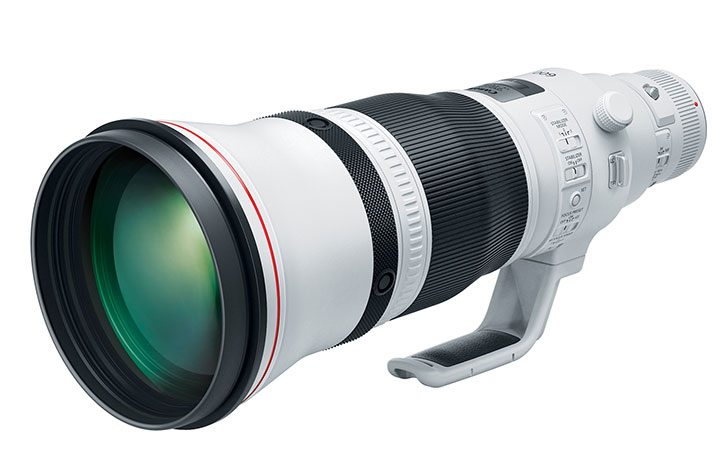
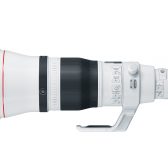
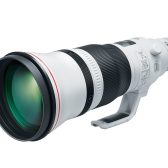
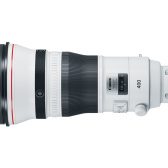
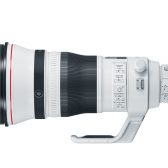
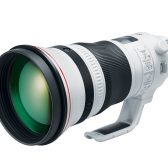
Of course I really hope that this will not go at the expense of IQ and reliability.
The future of Canon belongs to R-series and RF-mount - whether you like it or not. (personally I am a bit frustrated...)
Of course that is just a guess.
This was what I was wondering as well. Will Canon ever make a RF 400mm f/2.8 L and also RF 600mm f/4 L ?
If the RF mount can indeed lead to faster lens then I assume the next mirrorless generation of big-whites will be even faster?
Is a RF 400 f/2.0 even possible? How about a RF 500mm f/2.8?
Or are am I dreaming a decade or two ahead in time till light weight materials can be developed that would bring the weight of these potential behemoths down to manageable levels.
The speed of telephoto lenses is limited not by the mount, but by the size (and weight) of the front element.
Wait so they will have an adapter to take a RF lens (made for mirrorless system) and use it on a DSLR? Is that even possible? I thought the adapter only works to make a EF lens work on a EOS R system... (slightly confused -- does it go both ways? Can a new R lens work on my 1dx mark ii with the adapter? )
Ok, but they claim the RF lens will provide faster lens with better optical quality. So...does that mean the next generation of big whites will be on the RF mount to achieve those results? Is this in fact the last batch of great EF lens from Canon?
No, it means that the next generation of RF lenses will be lenses that could be made faster and better optically for RF mount compared to EF mount. Which is not big whites.
Seriously speaking I guess that such weight reduction could not be achieved without compromising some factors. And there was no plate of glass in front of the real front element to remove as in case of I -> II upgrade.
And regarding the RF mount construction and reduced flange distance - it has relatively negligble effect on the construction of long telephotos. It does make a difference in wide glass, as that retrofocus design can be avoided in some cases.
The long glass has A LOT of space behind the rear element in case of EF lenses. Canon found space for drop-in filters there, in case of 200-400 1.4x extender optics fit there as well.
I cannot even imagine a front element of such diameter.
Your questions are completely ignoring the geometry and basic physics. Maybe you read the available informations about RF first?
Over to you Nikon.
apologies...my excitement at the news has got the better of me.
My quess will be that launch of new EF lenses will only be to maintain the system, as long as needed. Future is R-series and RF mount. Personally I would only by new EF lenses if I was pro, that see it as a 3-5 year production item. For enthusiast like me with an lifetime on equipment on +10 years, I will stick with my 6D and current EF line up as long a possible and then go for a 6D like R-series and a fast 2.8 / 2.0 kit zoom and then converter for my current EF lenses. I hold my money in the pocket for the next 3 years and then look around the Canon landscape.
One has to assume that Canon will support the new range of big whites for at least 7-10 years. It would be the slap in the face of anyone buying these 10k + lens if they release RF super tele-photos that are better in quality in the next 3-5 years. As someone who has held out buying the EF 400 f/2.8 ii (i did rent it often though) I think the weight improvement alone for the III's is a determining factor. Add to that it seems the balance issue of the 400 ii has been sorted in version iii so that's fantastic news. I just hope the IQ and durability hasn't been compromised (and has in fact been improved)
EF 400mm f/2.8L IS II USM 8.47 lbs / 3850 g Vs the III is 6.26 lbs / 2840g
Weight reductions are just awesome
and for comparison Sony FE 400mm f/2.8 GM OSS Lens 6.4 lb / 2.9 kg
not just the weight reduction...but the additional IS improvement means the 400 f/2.8 iii will be far easier to handle (and hand hold a lot more then was possible with version ii). This is simply incredible news for wildlife photographers who aren't always in a position to always use tripods and monopod setups.
An EF 600mm f / 4L IS III of 3.1 Kg is too heavy for use without a tripod...
So, for now, I keep my EF 400mm f / 4 DO IS II USM, despite a diaphragm at F5.6 and F8 with Extender EF 1.4x III and Extender EF 2x III..
I hope a 600mm F4 DO will soon come out on the market with a maximum weight of 2.5 Kg.